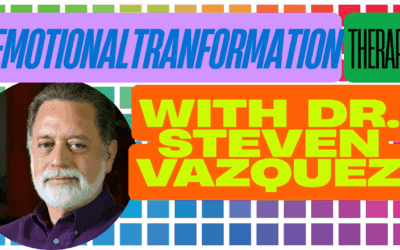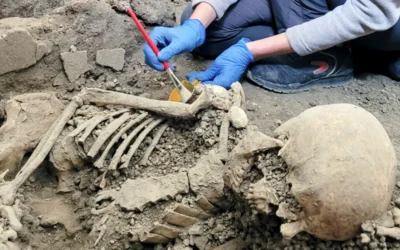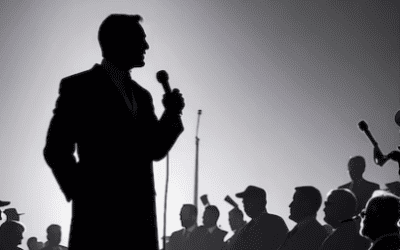What is Accelerated Resolution Therapy (ART)? An Evidence-Based Treatment for Trauma

Accelerated Resolution Therapy (ART) is an innovative form of psychotherapy that aims to rapidly resolve psychological trauma and other mental health issues. Developed by Laney Rosenzweig in 2008, ART combines techniques from various established therapeutic modalities to provide a brief, effective treatment for individuals struggling with the aftermath of traumatic experiences.
Is Accelerated Resolution Therapy Evidence-Based?
Yes, ART is an evidence-based therapy supported by multiple research studies. Randomized controlled trials have demonstrated ART’s efficacy in treating post-traumatic stress disorder (PTSD), depression, anxiety, and other trauma-related issues. The rapid results and high success rates observed in these studies have contributed to ART’s growing recognition as a viable treatment option.
What Therapeutic Models is ART Similar To?
ART shares theoretical overlaps and similarities with several well-established psychotherapy models:
- Eye Movement Desensitization and Reprocessing (EMDR): Like EMDR, ART uses eye movements to facilitate the processing of traumatic memories and reduce their emotional intensity.
- Cognitive Behavioral Therapy (CBT): ART incorporates cognitive restructuring techniques to help individuals identify and challenge distorted thought patterns related to their traumatic experiences.
- Gestalt Therapy: ART’s emphasis on the “here and now” and its use of imagery and visualization techniques are reminiscent of Gestalt therapy principles.
- Mindfulness-Based Therapies: ART encourages individuals to develop a non-judgmental, present-focused awareness, which is a core component of mindfulness-based approaches.
Core Assumptions and Tenets of ART
The core assumptions and tenets of ART include:
- Rapid Resolution: ART operates on the premise that psychological trauma can be resolved quickly, often within a few sessions, by directly targeting and processing the underlying traumatic memories.
- Memory Reconsolidation: ART leverages the brain’s natural ability to update and reconsolidate memories, allowing individuals to reprocess traumatic experiences in a more adaptive manner.
- Mind-Body Connection: ART recognizes the intricate connection between the mind and body and incorporates both cognitive and somatic techniques to facilitate healing.
- Client-Centered Approach: ART emphasizes the importance of the therapeutic relationship and tailors the treatment to the unique needs and goals of each individual client.
The Development of ART: Laney Rosenzweig’s Journey
Laney Rosenzweig, a licensed marriage and family therapist, developed ART in 2008 after years of experience working with trauma survivors. Rosenzweig’s journey began with her own personal experience of trauma and her subsequent search for effective treatment options.
Drawing inspiration from her background in EMDR and other therapeutic modalities, Rosenzweig set out to create a more streamlined and efficient approach to trauma resolution. She collaborated with colleagues in the field of psychology and neuroscience to refine the ART protocol and conduct initial research studies.
Cultural and Economic Influences on ART’s Development
ART’s development took place against the backdrop of a growing awareness of the prevalence and impact of psychological trauma. The wars in Iraq and Afghanistan, as well as high-profile cases of sexual assault and domestic violence, brought the issue of trauma to the forefront of public consciousness.
At the same time, there was a growing demand for brief, cost-effective treatments that could be delivered in a variety of settings, including military and community mental health clinics. ART’s rapid results and flexible protocol made it well-suited to meet these needs.
Schisms and Splits in Clinical Practice
While ART has gained recognition as an effective trauma treatment, it has also faced some criticism and skepticism from practitioners of more traditional therapeutic approaches. Some have questioned the long-term durability of ART’s rapid results, while others have raised concerns about the potential risks of processing traumatic memories too quickly.
Despite these debates, ART has continued to gain traction in the field of psychotherapy, with a growing number of clinicians seeking training in the model and incorporating it into their practice.
ART’s Influence on the Field of Psychotherapy
Since its development, ART has had a significant impact on the field of psychotherapy, particularly in the area of trauma treatment. ART’s success has challenged long-held assumptions about the time and effort required to resolve psychological trauma, and has inspired other clinicians to explore more rapid and targeted treatment approaches.
ART’s principles and techniques have also been integrated into other therapeutic modalities, such as cognitive processing therapy (CPT) and prolonged exposure therapy (PE), leading to the development of hybrid approaches that combine the best elements of each model.
Timeline of ART’s Development and Dissemination
- 2008: Laney Rosenzweig develops the initial ART protocol
- 2009: First research study on ART published in the Journal of EMDR Practice and Research
- 2010: ART training program established to train clinicians in the model
- 2012: ART recognized as an evidence-based treatment by the National Registry of Evidence-Based Programs and Practices (NREPP)
- 2013: International Society of Accelerated Resolution Therapy (IS-ART) founded to promote research and training in ART
- 2015: ART integrated into the treatment protocols of several major healthcare systems, including the Veterans Health Administration (VHA)
- 2018: ART celebrates its 10-year anniversary, with over 1,000 trained clinicians worldwide
ART’s Conceptualization of Trauma, the Unconscious, and the Self
ART views psychological trauma as a disruption in the brain’s normal memory processing system, leading to the storage of traumatic memories in a fragmented, emotionally-charged state. These unresolved memories can continue to trigger distressing symptoms long after the actual traumatic event has passed.
ART posits that by directly accessing and reprocessing these traumatic memories, individuals can achieve a more integrated and coherent sense of self. The therapy aims to help clients “re-script” their traumatic experiences, replacing negative images and beliefs with more adaptive ones.
ART Interventions and Techniques
ART employs a variety of interventions and techniques to facilitate the processing of traumatic memories:
- Eye Movements: ART uses horizontal eye movements, similar to those in EMDR, to engage the brain’s natural processing mechanisms and reduce the emotional intensity of traumatic memories.
- Imaginal Exposure: Clients are guided to visualize and reprocess their traumatic experiences in a safe, controlled environment, allowing them to gain a new perspective on the event.
- Cognitive Restructuring: ART helps clients identify and challenge negative beliefs and thought patterns related to their trauma, replacing them with more accurate and adaptive ones.
- Somatic Techniques: ART incorporates body-based interventions, such as deep breathing and progressive muscle relaxation, to help clients regulate their physiological responses to trauma.
- Bilateral Stimulation: In addition to eye movements, ART may use other forms of bilateral stimulation, such as alternating tones or tapping, to facilitate memory processing.
Goals and Stages of Treatment in ART
The primary goal of ART is to help individuals resolve their traumatic memories and achieve a greater sense of empowerment and resilience. The therapy typically progresses through three main stages:
- Preparation: The therapist establishes rapport with the client, gathers information about their traumatic experiences, and provides psychoeducation about the ART process.
- Processing: The client engages in the active reprocessing of their traumatic memories using ART techniques, such as eye movements and imaginal exposure.
- Integration: The therapist helps the client consolidate their gains and develop a new, more adaptive narrative about their traumatic experiences.
Contexts in Which ART is Practiced
ART is practiced in a variety of contexts, including:
- Private practice settings
- Community mental health clinics
- Military and veterans’ health facilities
- Substance abuse treatment centers
- Domestic violence shelters
- Disaster relief organizations
What Makes ART Unique?
ART’s unique combination of techniques and its emphasis on rapid resolution set it apart from other trauma-focused therapies. By directly targeting and reprocessing traumatic memories, ART aims to achieve significant symptom relief in a shorter timeframe compared to traditional talk therapy approaches.
ART’s flexibility and adaptability also make it well-suited for a variety of populations and settings. The therapy can be delivered in individual or group formats, and can be modified to meet the specific needs of different age groups and cultural backgrounds.
Potential Integration of ART Techniques into Modern Therapy Practice
While ART is a standalone therapy model, many of its techniques and principles can be integrated into other forms of psychotherapy. For example, therapists trained in cognitive-behavioral therapy (CBT) may incorporate ART’s imaginal exposure and cognitive restructuring techniques into their existing treatment protocols.
Similarly, therapists who work with somatic experiencing or other body-based approaches may find ART’s bilateral stimulation techniques to be a valuable addition to their therapeutic toolkits.
By selectively incorporating ART techniques into their practice, modern therapists can potentially enhance the efficacy and efficiency of their trauma treatment interventions.
Bibliography and Further Reading
- Kip, K. E., Rosenzweig, L., Hernandez, D. F., Shuman, A., Sullivan, K. L., Long, C. J., … & Diamond, D. M. (2013). Randomized controlled trial of accelerated resolution therapy (ART) for symptoms of combat-related post-traumatic stress disorder (PTSD). Military medicine, 178(12), 1298-1309.
- Kip, K. E., Sullivan, K. L., Lengacher, C. A., Rosenzweig, L., Hernandez, D. F., Kadel, R., … & Diamond, D. M. (2014). Brief treatment of co-occurring post-traumatic stress and depressive symptoms by use of accelerated resolution therapy®. Frontiers in psychiatry, 5, 11.
- Rosenzweig, L. (2014). Accelerated Resolution Therapy: An innovative mental health intervention to treat post-traumatic stress disorder. Journal of Military and Veterans’ Health.
- Waits, W., Marumoto, M., & Weaver, J. (2017). Accelerated resolution therapy (ART): a review and research to date. Current psychiatry reports, 19(3), 18.


























0 Comments